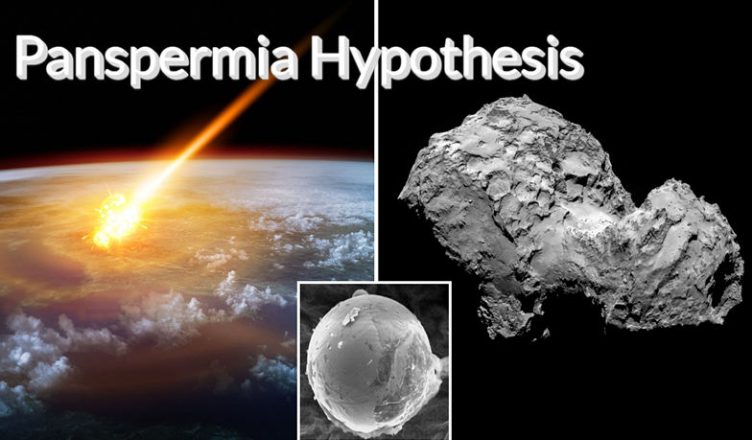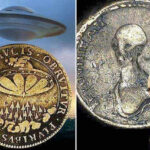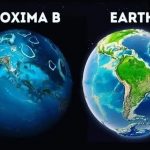The theory of panspermia, also known as panspermia hypothesis, posits that various forms of microorganisms can exist in the universe and spread through moving meteorites, comets, asteroids, and the like. In this hypothesis, microorganisms in the universe may enter Earth through meteorites or comets, contributing to the origin of life on Earth.
Panspermia is not a modern concept and was mentioned as early as in the 5th century BC by the Greek philosopher Anaxagoras, who suggested that life fell from the sky to Earth.
However, panspermia is not widely accepted by mainstream science for several reasons. Apart from the lack of sufficient evidence, the major issue is that it does not explain the origin of life itself; it merely shifts the idea from “life originated on Earth” to “life originated in the universe” without addressing why life would originate in the universe. Nevertheless, there are several compelling pieces of evidence related to the panspermia hypothesis that remain unexplained by scientists. Here are the 10 most significant pieces of evidence:
1. Early Life on Earth:
Fossils from the early Earth suggest that life rapidly appeared after the formation of the planet. This implies that under suitable conditions, life can flourish within a few hundred million years. Scientists estimate that Earth has existed for approximately 4.55 billion years. The oldest known sedimentary rocks that date back to the Archean Eon come from Akilia in southern Greenland and are at least 3.85 billion years old.
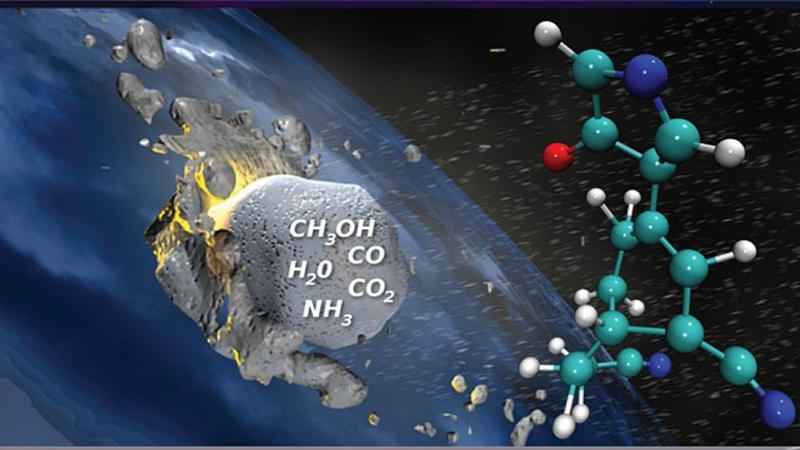
The oldest known petrified stromatolites or bacterial structures are from around 3.5 billion years ago. These bacterial structures are believed to have performed photosynthesis, one of the earliest oxidation-reduction reactions in the history of life. Samples retrieved from the Moon during the Apollo program indicate that around 3.9 billion years ago, the Moon underwent a late heavy bombardment, experiencing impacts more than 100 times previous levels. Scientists analyzed materials from lunar meteorite craters and found them to be similar to materials found in Martian meteorite craters. Researchers Kring and Cohen suggest that these impacts, akin to sterilizing the Earth’s surface, may have affected the entire solar system, including deep-sea environments.
Data from the Wilkinson Microwave Anisotropy Probe suggest that the universe’s age is approximately 13.7 billion years. For a planet to form in the universe, it must obtain the essential elements for life, such as carbon, nitrogen, and oxygen, during stellar nucleosynthesis and form over millions of years. This implies that life could only emerge in the universe after approximately 12.7 billion years.
If we assume that life originated on Earth and took about a billion years to emerge after the Earth’s formation, we can speculate that life appeared on Earth between 3.5 and 3.9 billion years ago. In contrast, if life came from elsewhere, it could have arrived as early as 900 million years after Earth’s formation, even though Earth would not have provided a hospitable environment until about 3.5 billion years ago.
2. Allan Hills 84001 Meteorite:
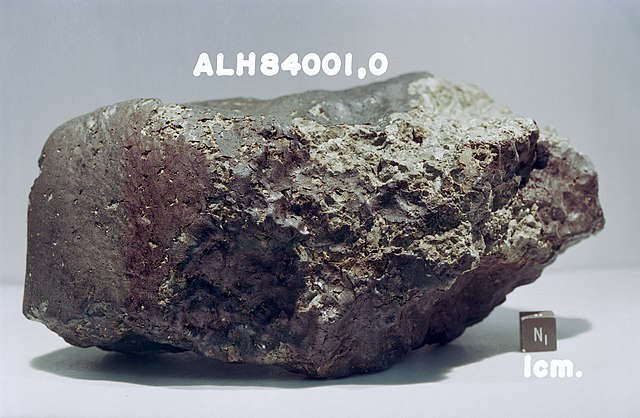
In 1976, NASA’s Viking mission to Mars conducted various biological experiments and initially detected certain life-detection indicators. However, subsequent analysis led most scientists to believe that these results were due to non-biological chemical reactions, possibly influenced by oxidants in Martian soil. Despite this, the designers of the biological experiments still consider the possibility that life once existed on Mars.
Microscopic structures resembling Earth bacteria were discovered on the Allan Hills 84001 meteorite, found on Mars in 1996. When this news was first announced, many believed it was evidence of fossils and, therefore, extraterrestrial life. However, later experts questioned whether it was life and suggested it might be the result of organic compounds cooling over time. Nevertheless, in November 2009, a scientific team from the Johnson Space Center reaffirmed the finding, stating that it could provide evidence of “life on ancient Mars.”
3. Alien Bacteria in Meteorites:
On May 11, 2001, two scholars, D’Argenio and Geraci, claimed to have discovered living alien bacteria in a meteorite, asserting that the DNA of these bacteria was entirely distinct from life on Earth. In 2001, a team of British and Indian scientists led by Chandra Wickramasinghe announced that they had obtained samples of agglomerated living cells in Hyderabad, possibly related to the Kerala red rain. Wickramasinghe believed that these bacteria, found at an altitude of 41 kilometers, provided direct evidence of bacterial survival in a vacuum. They discovered two types of bacteria and a fungus on filters, namely Bacillus simplex, Staphylococcus pasteuri, and Engyodontium album.
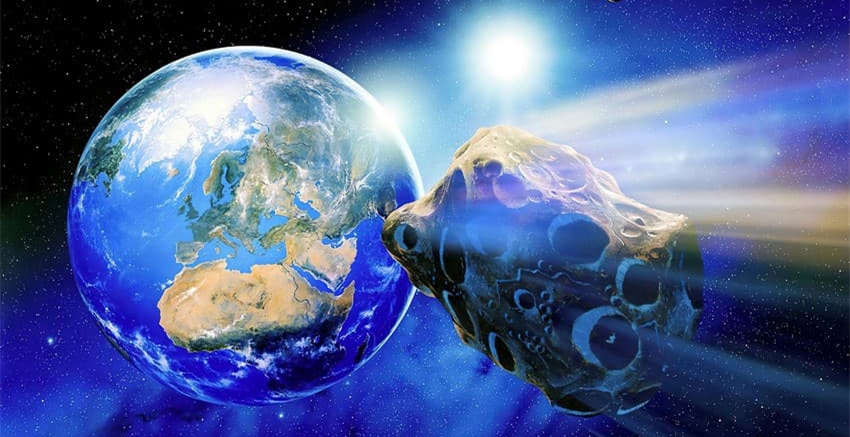
A report from NASA’s Ames Research Center stated that life from Earth could not have reached such high altitudes. Max Bernstein, a scholar at the research center, suggested that it might be more plausible to believe that life in those environments originated from outer space.
4. High-Altitude Bacteria
In 2005, the Indian Space Research Organization (ISRO) decided to further investigate this phenomenon. On April 10, 2005, they collected air samples at altitudes of 20 to 40 kilometers and placed them in uncontaminated test tubes. These samples were analyzed in two Indian laboratories, revealing 12 bacterial and 6 fungal species. Among them, three bacterial species were newly discovered and showed greater resistance to ultraviolet radiation compared to surface bacteria. Whether these bacteria are from Earth or extraterrestrial, their ability to withstand ultraviolet radiation is crucial for survival at such high altitudes.
5. Extremophiles:
Astronomers are also interested in extremophiles because the earliest forms of life are believed to have thrived in harsh environments. In fact, many of the environments where primitive life is thought to have originated were more extreme than those where modern extremophiles are found, yet life managed to persist in those conditions. Even in the cosmos and deep sea, these organisms can enter a dormant state until conditions become suitable for survival.
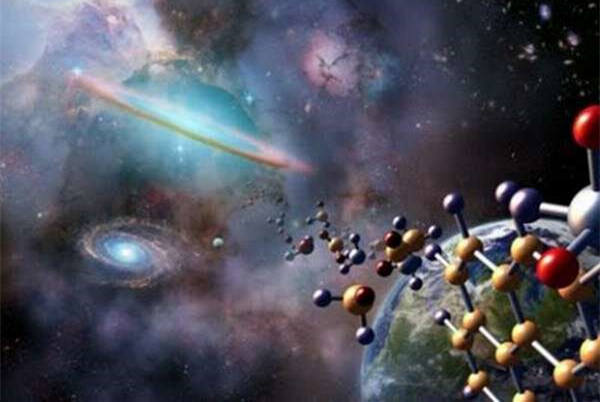
Some bacteria and animals can survive in deep-sea environments exceeding 100°C, and there is even research suggesting that bacteria can remain active in a vacuum at temperatures as high as 250°C, which would be lethal to most life forms in the atmosphere. Many bacteria thrive in challenging environments, including high-pressure deep-sea locations, extremely dry, cold, and vacuum conditions, as well as environments filled with acidic substances. Surviving in the cosmos appears to pose no significant challenge for bacteria, mosses, and ancient life forms. In fact, scientists have demonstrated that tardigrades can survive in a vacuum.
Recent research indicates that if bacteria are protected from radiation damage (e.g., shielded within meteorites or comets), they can remain in a state similar to hibernation for millions of years. Additionally, there is a radioresistant bacterium called Deinococcus radiodurans that can survive exposure to radiation. NASA has replicated the harsh conditions of space in their laboratories, creating protocells that play a vital role in the creation of primitive life.
6. Spores:
Spores may be another form of life capable of traveling through space. Spores gave rise to later plant life, algae, fungi, and protists, while bacteria can form structures such as endospores and microbial cysts under stress. These structures can recover from a state of suspended metabolism when exposed to stimuli like ultraviolet radiation, gamma rays, dry conditions, lysozyme, starvation, temperature variations, and more. Spores can survive in harsh environments until conditions become suitable for them to germinate and grow, even in environments vastly different from their original habitats.
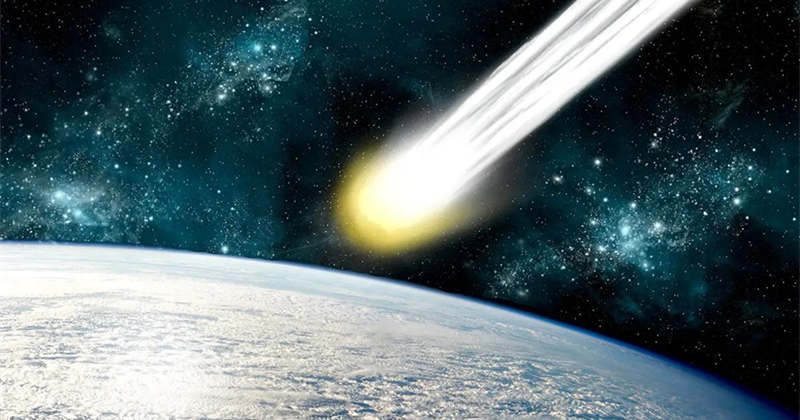
7. Potential Habitats for Life
Many studies suggest that life may exist on Earth-like planets (such as Mars). Mars once had flowing rivers, and scientists have found evidence of features like canyons on the planet, which has been further confirmed by later Mars missions. In December 2006, Michael C. Malin’s research institution published a scientific journal describing the evidence of recent river activity in images returned by Mars rovers.
The Moon has also had water in the past, and it is likely that other moons in the solar system also contain water. Although this water exists in the form of ice on the Moon’s surface, it may melt into liquid water in the Moon’s depths due to internal heat. Such extreme environments are found throughout the universe. Just as there may be life hidden in the ice of the Moon, scientists have also discovered bacteria thriving in hot rocks within the Earth’s crust.
8. Extraterrestrial Life:
Earth is the only place in the universe where humanity knows life exists. The Drake equation, which calculates the probability of encountering intelligent civilizations within a star system (like the solar system), yields a very low likelihood. However, when you extend this calculation to the entire universe, the possibility of civilizations existing elsewhere becomes nearly certain. Even though interstellar travel would require enormous time and resources, there are still many organizations, like the Search for Extraterrestrial Intelligence (SETI), continuously searching for extraterrestrial civilizations.
Astrobiology presents the Rare Earth hypothesis, explaining that the conditions for the emergence of complex, multicellular life are extremely stringent throughout the universe. However, it also suggests that the universe is teeming with single-celled microorganisms.
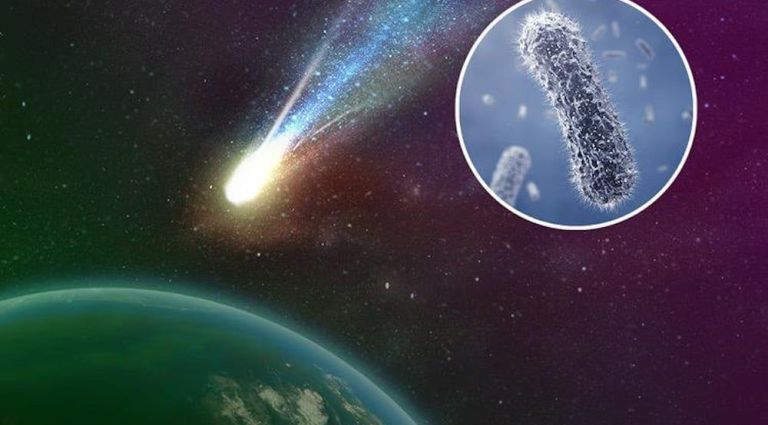
9. Organic Molecules in Space:
In 2008, an analysis of the C/C isotope ratios of compounds found in the Murchison meteorite indicated that the substances attached to the meteorite did not originate from Earth. These substances closely resembled uracil, purine, and pyrimidine, which are biologically relevant molecules. This suggests that many of the compounds that make up life on Earth may have appeared in the early solar system and could have been the source of life. In August 2009, scientists from NASA also found aminomalonate, a fundamental chemical compound for life, on the Stardust mission.
10 . Apollo 12:
When Apollo 12 returned the Surveyor 3 lunar module to Earth, NASA’s research team discovered streptococcus bacteria living in the camera housing of the lunar module. They believed that these bacteria had been brought to the moon from Earth during the previous Surveyor 3 mission. However, the researcher who retrieved Surveyor 3, Leonard D. Jaffe, disagreed with this assessment. NASA initiated an investigation in 2007, attempting to find additional evidence in the images returned by Surveyor 3.
END:
In conclusion, the aforementioned ten pieces of evidence present a series of intriguing perspectives regarding the Panspermia Hypothesis, which suggests that life may not be exclusive to Earth but rather widespread throughout the cosmos. While these pieces of evidence offer thought-provoking insights, further scientific research and evidence are still required to establish the feasibility of this hypothesis.
With the continuous advancement of scientific technology, our understanding of the universe is constantly expanding. Future space exploration and research may continue to delve deeper into this hypothesis, seeking more evidence or proposing new theories to explain the origin and distribution of life. Additionally, the exploration of potential extraterrestrial life is among the future research directions, which may include the search for alien life and signs of life on other planets within our solar system.
Although the Panspermia Hypothesis is not widely accepted at present, it provides a captivating perspective that stimulates contemplation on the relationship between life and the universe. Future scientific research will persist in unraveling the mysteries of life in our cosmos and bring forth more fascinating revelations about the universe in which we exist.
More UFOs and mysterious files, please check out our YouTube channel: MysFiles
Is the moon artificial? Evidence Proves the Moon Was Unnaturally Formed
